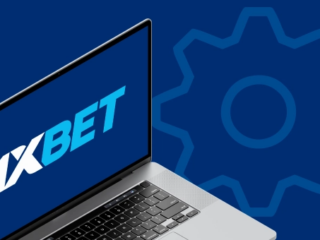
From what was once purely the realm of science fiction to now a part of our everyday lives, modern AI (artificial intelligence) has transformed the way we do things. Whether used to find the latest mouth-watering recipes or to help businesses scale operations by automating mundane tasks, the reach of AI seems almost endless.
In development circles, this is no different as many large language models (LLMs) can write code for everything from websites to phone apps. Like human coders, each AI model has specific codes that it is better at writing and others that it does not. In this article, we’ll look at the most common programming languages and identify which AI models are best suited for each to assist you with basic coding.
Python
Overtaking JavaScript in recent years, Python has become the most widely used programming language worldwide—and for good reason. Known for its easy readability and straightforward coding patterns, Python is easy to learn, making it a popular choice for beginners on coding platforms. Its versatility extends across various industries, from powering top-rated options for real money gambling to driving advancements in artificial intelligence, data science, and web development.
Python can also be used for a wide variety of applications, ranging from web development to data science and analytics. In recent years, however, the most popular applications for the language have been machine learning and artificial intelligence programming.
These applications have resulted in numerous additional libraries and frameworks being made available for those who use the language, which has contributed to its popularity. The wide adoption of Python is perhaps one of the primary reasons it is supported by almost all AI models currently available.
Google Gemini, ChatGPT, DeepSeek, Claude, and Llama are all capable of coding in Python. However, ChatGPT is known for its ability to not only write code in Python but also perform in-depth debugging with a high degree of accuracy. Meta’s Llama also stands out for its ability to be tweaked to perform incredibly specific Python coding tasks.
JavaScript
After Python, JavaScript is the go-to for many developers. Partly responsible for this is the language’s native support in almost all modern web browsers. However, its popularity can also be traced to the extensive ecosystem of libraries that help make building complex applications simpler.
Additional reasons JavaScript remains so popular after being around for decades is its ability to adapt to modern technologies. From use in IoT devices to game development, the language can be adapted almost seamlessly to suit what is needed. Supported by multiple devices and platforms has also helped the language become a common choice among programmers.
Despite all the largest AI models being able to code in Java, none does it as precisely as DeepSeek, which leans more toward coding than other models. Current versions of DeepSeek can produce optimized code that operates efficiently from the get-go.
That said, Google’s Gemini, ChatGPT, Llama, and Claude all support the language. Claude, in particular, is lauded for JavaScript coding, as the model’s stance on safety and reliability sometimes generates code that is more stable for immediate use.
C++
Released in 1983, C++ remains one of the most widely used programming languages worldwide. Known for its ability to manipulate hardware, the language is most commonly found in process-intensive applications, such as operating systems and game development.
Due to this direct link to hardware management, however, all coding in C++ needs to be highly accurate and efficient. Any coding mistakes could cause hardware to be overutilized or underutilized and result in glitchy applications. To generate efficient code from the start, the language has an extensive repository of libraries and tools that are highly beneficial to developers.

The wide-scale use of C++ has ensured that all modern AI developers have integrated support for the language, with Gemini being among the most capable due to the expanse of its C++ knowledge. Despite this, DeepSeek is one of the best-rated AI coders for this language, as it is specifically trained for coding purposes.
Claude, ChatGPT, and Llama can also be used for C++ coding but offer less reliability than Gemini and DeepSeek. Llama, in particular, requires a great deal of configuration and effort to generate problem-free code.
SQL
Thanks to its outstanding ability to manage large datasets, SQL (Structured Query Language) is utilized in millions of applications worldwide. These include storing user data on websites, generating business reports, extracting trends from extensive data, and tracking financial transactions.
Aside from its unique ability to sort and filter incredible quantities of data, the language is also popular due to its simple syntax. Since it is based primarily on English keywords, many inexperienced developers can easily pick it up.
The most significant allure of SQL is its ability to create relational links between data within unique databases. This includes integrity checks to ensure data is validated correctly and the enforcement of rules about how data is stored, transferred, deleted, and changed.
Almost all modern AI models can generate sufficiently efficient SQL code—with the exception of Llama, which can, at best, get by on the basics. ChatGPT and Gemini stand out in coding SQL, with both offering decent SQL code that works well within existing databases. Claude also shines because it can generate SQL from natural language more efficiently, helping it avoid common errors.
Last Words
Between the most significant AI models currently available to consumers, more than 20 coding languages are supported. Of these, those listed above are not only the best for various applications but are the most commonly used by developers in almost every industry.

While AI will certainly not replace human developers anytime soon, AI’s ability to generate code for routine functions and less complex tasks can significantly reduce the burden on developers. This allows them to focus on more complex aspects of coding, streamlining the development process and accelerating the release of new innovations.












